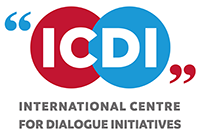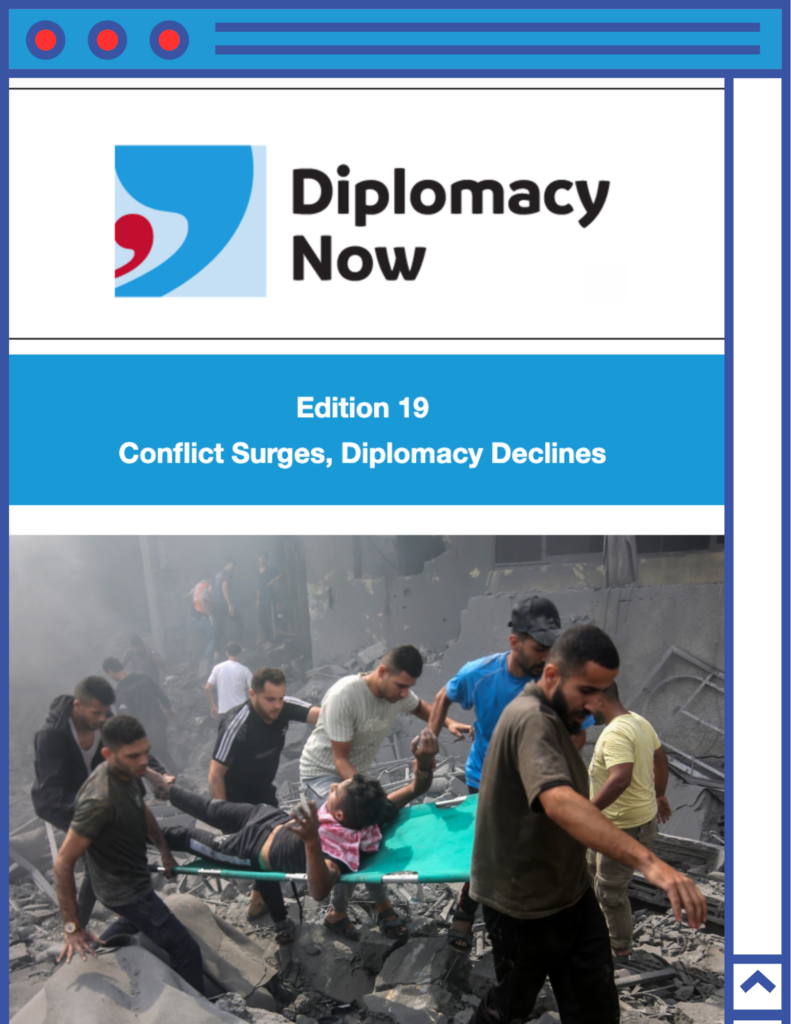A major presence in the Democratic Republic of Congo for the past quarter century, the United Nations Organization Stabilization Mission (MONUSCO) is now set to completely withdraw, leaving behind a country that is still prey to violence from armed groups in the east and mounting tensions elsewhere. The UN Security Council authorized the move at the behest of Congolese authorities, who have repeatedly requested an accelerated departure for the peacekeepers, the last of whom are to leave by the end of 2024.
The past few years have been particularly complicated for the mission and its Blue Helmets, who face widespread criticism, from both the government and general population, for being ineffective and overly passive in the face of continued violence, including large-scale killings. It is thus against a backdrop of resentment and perceived failure that MONUSCO is being ushered toward the exit, and its final challenge – its last stand, so to speak – will be the withdrawal itself.
One of the longest operating and expensive missions in Africa
MONUSCO has always stood out among the UN’s various peacekeeping missions. Introduced in 2010 to replace MONUC, (that was deployed in 1999), it is currently the longest operating mission in Africa. With an annual budget of more than US$ 1 billion, it is also one of the most costly, in the same range as MINUSMA, prior to its departure from Mali in 2023, and the United Nations Mission in South Sudan (UNMISS). For what is expected to be MONUSCO’s final annual mandate, the Security Council authorized 13,500 military personnel, 660 military observers and staff officers, 591 police officers and 1,410 members of formed police units. In June, and for what remains of the year, the numbers will be reduced to 11,500 military personnel, 600 military observers and staff officers, 443 police officers and 1,270 members of formed police units.
Created in the wake of Security Council Resolution 1279, on Nov. 30, 1999, MONUC was initially tasked with overseeing the ceasefire signed in Lusaka, in July 1999, between parties involved in the Second Congo War. The conflict pitted Congolese rebel movements, backed by regional powers, against the Kinshasa government, itself the result of a rebellion supported by those same powers. The mission’s mandate was later expanded to include tasks such as protecting civilians, reforming the security sector, and organizing elections.
A ceasefire that never was
The mission did have some early success in the DRC. But it was also challenged, from the very beginning, by the fact that the 1999 ceasefire never really held. Hostilities continued on the ground, and MONUC’s initial deployment in November of that same year would do little to change things. The UN’s peacemakers thus faced a paradox that hounded them throughout their long tenure, even after they began operating under the MONUSCO banner: how to oversee a ceasefire when hostilities never in fact ended.
Nevertheless, the mission’s role would take on greater importance following the Sun City Agreement, signed April 2, 2003 in Sun City, South Africa, following long, painstaking talks by the Inter-Congolese Dialogue group. This “comprehensive and inclusive agreement on the transition in the DRC” was, in reality, based on the principle of “vertical and horizontal sharing” of the positions of power through control of institutions. The agreement divvied up parts of the Congolese State to the different parties involved, but in doing so, reinforced and legitimized the geographical fragmentation already in place as a result of military balance of power.
The most visible part of this new configuration would be the improbable grouping – the so-called “1+4” formula – of a President of the Republic with not one, but four vice-presidents, drawn from the former warring parties – the government, the Movement for the Liberation of Congo, and the Congress Rally for Democracy (RCD) – and the non-belligerent opposition.
In this politically fragmented landscape, MONUC served to provide at least a minimum level of contact between former warring parties who had little trust in each other. It was somewhat successful, in that sense, in helping restore and reunify the national territory as stipulated in its then mandate.
Successes of the Congo mission
At the end of the transition period, the UN mission’s contribution would be more significant still as it helped organize the 2006 elections. It offered equipment and assistance to the Independent National Electoral Commission (CENI), provided civic education to would-be voters and even helped train the Congolese national police on how to handle electoral matters during the two rounds of a tense presidential election.
The Blue Helmets then helped calm tensions between President Joseph Kabila, the winner, and vice-president Jean-Pierre Bemba, who lost the runoff, when their respective guards faced off in the center of Kinshasa after the election results were declared.
In subsequent election cycles, the UN mission would become less and less involved.
Routing out the M23 rebels
MONUSCO’s biggest success in the DRC was no doubt its contribution to the defeat, in 2013, of the March 23 Movement (M23), a rebel faction made up mostly of ethnic Tutsis. Paradoxically, this would also end up being a source of tension between the UN mission and Congolese public opinion.
On Nov. 4, 2013, M23 announced an end to its rebellion after a stinging defeat that left its leadership and fighters fleeing into Rwanda and Uganda. It was a stunning turn of events considering that at its height, M23 had gone so far as to temporarily occupy the city of Goma, the capital of North Kivu Province, where several MONUSCO contingents were deployed.
Several factors led to what just a few months prior seemed like an unimaginable outcome.
Western powers including the United States, along with certain donors, put pressure on Uganda and Rwanda, sponsors of M23, some even threatening to cut off desperately needed aid money. But it was military pressure by the Congolese military – with significant logistical support from MONUSCO, particularly in the air – that really spearheaded the victory, the first in years for government forces.
The FIB raises expectations about military abilities
The Force Intervention Brigade (FIB), a military formation within MONUSCO that the Security Council created in March 2013 (Resolution 2098), was particularly decisive. The FIB consisted of three infantry battalions, an artillery company, a special forces unit, and a reconnaissance team provided by South Africa, Malawi, and Tanzania.
History has a way of repeating itself. M23 took up arms again in November 2021, and for this year, 2024, the same countries have committed to deploying troops as part of the SAMIRDC, the Southern African Development Community’s mission in the DRC.
After helping defeat M23, FIB appeared to shelve its weapons. In the meantime, hundreds of other armed groups continue to proliferate and prosper, including the Ugandan terrorist rebels from the Allied Democratic Forces (ADF), who devastated the territory of Beni, in the northern part of North Kivu bordering Uganda, before spreading towards the neighboring province of Ituri, despite the massive presence of the Congolese armed forces and… MONUSCO.
The problem for MONUSCO is that the FIB victory in 2013 raised expectations about the mission’s military abilities. It seemed to establish a precedent, in other words, even though the resolution that created FIB (Resolution 2098) stipulated otherwise.
Either way, it is this perception of inertia in the face of massacres that drives anti-MONUSCO sentiment among the Congolese people. No doubt state security forces also bear responsibility, but in this case MONUSCO makes for a convenient scapegoat. And as popular opinion turned more and more against the UN peacekeepers, the government decided ultimately to demand their departure, starting now and to be completed by the end of the year.
Wearing out its welcome
When MONUC arrived, in 1999, the DRC hadn’t even begun to recover from the war that ended up destroying the last vestiges of the State that Marshal Mobutu left behind when he fled the country in 1997. Later, Joseph Kabila, as head of an ungainly presidency of five – two of whom still had their respective armies intact – desperately needed a UN mission to keep the country from falling back into chaos at the slightest misstep within the presidential coalition.
But over time, as Kabila established himself more firmly, relations between Kinshasa and the UN mission would grow increasingly tense, to the point eventually of being downright dismal as the end of the president’s second constitutional term approached, in 2016, and he attempted to cling to power.
Félix Tshisekedi would take power a few years later, and the dynamics of Kinshasa’s relationship with the peacekeeping mission shifted again, at least initially.
Tshisekedi became president in 2019 following controversial elections but found himself in a relatively weak position politically. Joseph Kabila may have lost the presidency, but his faithful allies controlled the Parliament, the Cabinet and the Constitutional Court, along with the security, police and intelligence sectors.
Given this “hostile” environment, Tshisekedi would lean on MONUSCO, thus improving relations. But security problems in the east, including large-scale massacres of civilians in Beni and the resurgence, in November 2021, of M23, would turn things between Tshisekedi and the UN mission in the opposite direction, culminating in demands for MONSUCSO’s withdrawal.
The strategic exit plan negotiated with the government calls for the Blue Helmets to hand over their responsibilities to the Congolese army and police. There are risks involved, especially when it comes to the millions of internally displaced people from the east. Of those, some are grouped in camps near MONUSCO bases where they thus benefit from a relative degree of protection against the armed ethnic groups lurking all around them.
Final takeaways
Peacekeeping missions continue to be important tools for countries that are emerging from conflicts and where the State does not yet have its own security forces – the army and police – to guarantee protection for all inhabitants within its borders.
It goes without saying that for a peacekeeping mission to be effective, there must be peace to maintain. MONUSCO’s failure in the DRC is due in part to the fact that it had to deal, from the outset, with different forms of conflict. Rather than peacekeeping, the situation called for a peace enforcement mission, but that would have required a reformulation of the mission’s mandate and the consent of the countries contributing troops.
Any mission should have a clear exit plan upon deployment, one that takes into account the sustainability of its actions and includes a succession strategy. This was clearly lacking for MONUSCO which, after so many years in the DRC, has good reason to fear that its departure will leave a security vacuum in certain places where it remains the last line of protection against attacks from militias and other armed groups.
Finally, such missions need to operate closely with the countries that host them, with clear communication channels not only with authorities but also the general population so as to limit misunderstandings, including the unreasonable expectations partners may have regarding a mission’s powers and ability.
Onesphore Sematumba is the Democratic Republic of Congo and Burundi analyst/International Crisis Group.




